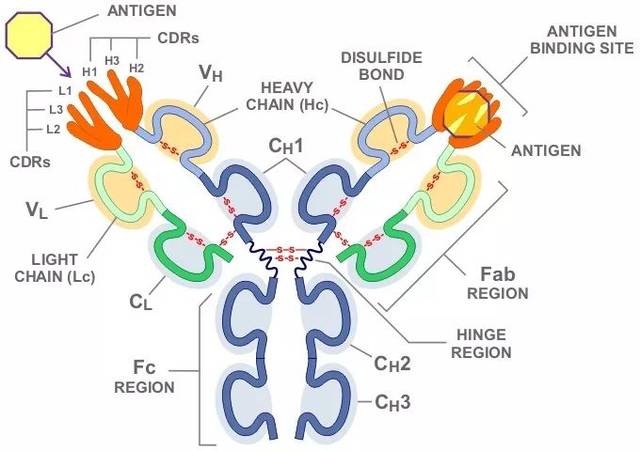Product Name :
OR6N1 polyclonal antibody Background :
Olfactory receptors function by associating with odorant molecules to launch a neuronal response that elicits the perception of smell. Olfactory receptor genes are unevenly dispersed among 51 loci on 21 human chromosomes, and are composed of 172 subfamilies. OR6N1 (olfactory receptor, family 6, subfamily N, member 1), also known as olfactory receptor OR1-22, is a 312 amino acid multi-pass membrane protein belonging to the G-protein coupled receptor 1 family. As the largest family in the genome, the G-protein coupled receptor 1 family originated from single coding-exon genes. Encoded by a gene that maps to human chromosome 1q23.1, OR6N1 functions as an odorant receptor. Like many hormone and neurotransmitter receptors, OR6N1 shares a 7-transmembrane domain structure and recognizes G protein-mediated transduction of odorant signals. Product :
Rabbit IgG, 1mg/ml in PBS with 0.02% sodium azide, 50% glycerol, pH7.2 Storage&Stability :
Store at 4°C short term. Aliquot and store at -20°C long term. Avoid freeze-thaw cycles. Specificity :
OR6N1 polyclonal antibody detects endogenous levels of OR6N1 protein. Immunogen :
A synthetic peptide corresponding to residues in Human OR6N1 Conjugate :
Unconjugated Modification :
Unmodification
OR6N1 polyclonal antibody Background :
Olfactory receptors function by associating with odorant molecules to launch a neuronal response that elicits the perception of smell. Olfactory receptor genes are unevenly dispersed among 51 loci on 21 human chromosomes, and are composed of 172 subfamilies. OR6N1 (olfactory receptor, family 6, subfamily N, member 1), also known as olfactory receptor OR1-22, is a 312 amino acid multi-pass membrane protein belonging to the G-protein coupled receptor 1 family. As the largest family in the genome, the G-protein coupled receptor 1 family originated from single coding-exon genes. Encoded by a gene that maps to human chromosome 1q23.1, OR6N1 functions as an odorant receptor. Like many hormone and neurotransmitter receptors, OR6N1 shares a 7-transmembrane domain structure and recognizes G protein-mediated transduction of odorant signals. Product :
Rabbit IgG, 1mg/ml in PBS with 0.02% sodium azide, 50% glycerol, pH7.2 Storage&Stability :
Store at 4°C short term. Aliquot and store at -20°C long term. Avoid freeze-thaw cycles. Specificity :
OR6N1 polyclonal antibody detects endogenous levels of OR6N1 protein. Immunogen :
A synthetic peptide corresponding to residues in Human OR6N1 Conjugate :
Unconjugated Modification :
Unmodification
-
 Western blot (WB) analysis of OR6N1 polyclonal antibody at 1:500 dilution Lane1:HEK293T whole cell lysate Lane2:Raw264.7 whole cell lysate Lane3:H9C2 whole cell lysate
Western blot (WB) analysis of OR6N1 polyclonal antibody at 1:500 dilution Lane1:HEK293T whole cell lysate Lane2:Raw264.7 whole cell lysate Lane3:H9C2 whole cell lysate
Bioworld Biotech only provide peptides for our antibodies and do not provide additional peptide customization services.
Price/Size :
USD 368/1mg/vial
Tips:
For phospho antibody, we provide phospho peptide(0.5mg) and non-phospho peptide(0.5mg).Describe :
Blocking peptides are peptides that bind specifically to the target antibody and block antibody binding. These peptide usually contains the epitope recognized by the antibody. Antibodies bound to the blocking peptide no longer bind to the epitope on the target protein. This mechanism is useful when non-specific binding is an issue, for example, in Western blotting (WB) and Immunohistochemistry (IHC). By comparing the staining from the blocked antibody versus the antibody alone, one can see which staining is specific; Specific binding will be absent from the western blot or IHC performed with the neutralized antibody.Formula:
Synthetic peptide was lyophilized with 100% acetonitrile and is supplied as a powder. Reconstitute with 0.1 ml DI water for a final concentration of 10 mg/ml.The purity is >90%,tested by HPLC and MS.
Storage:
The freeze-dried powder is more stable. For short time at 2-8°C. For long term storage store at -20°C.
Note :
This product is for research use only (RUO only). Not for use in diagnostic or therapeutic procedures.
 OR6N1 polyclonal antibody
OR6N1 polyclonal antibody  Datasheet
Datasheet COA
COA MSDS
MSDS SHIP
SHIP